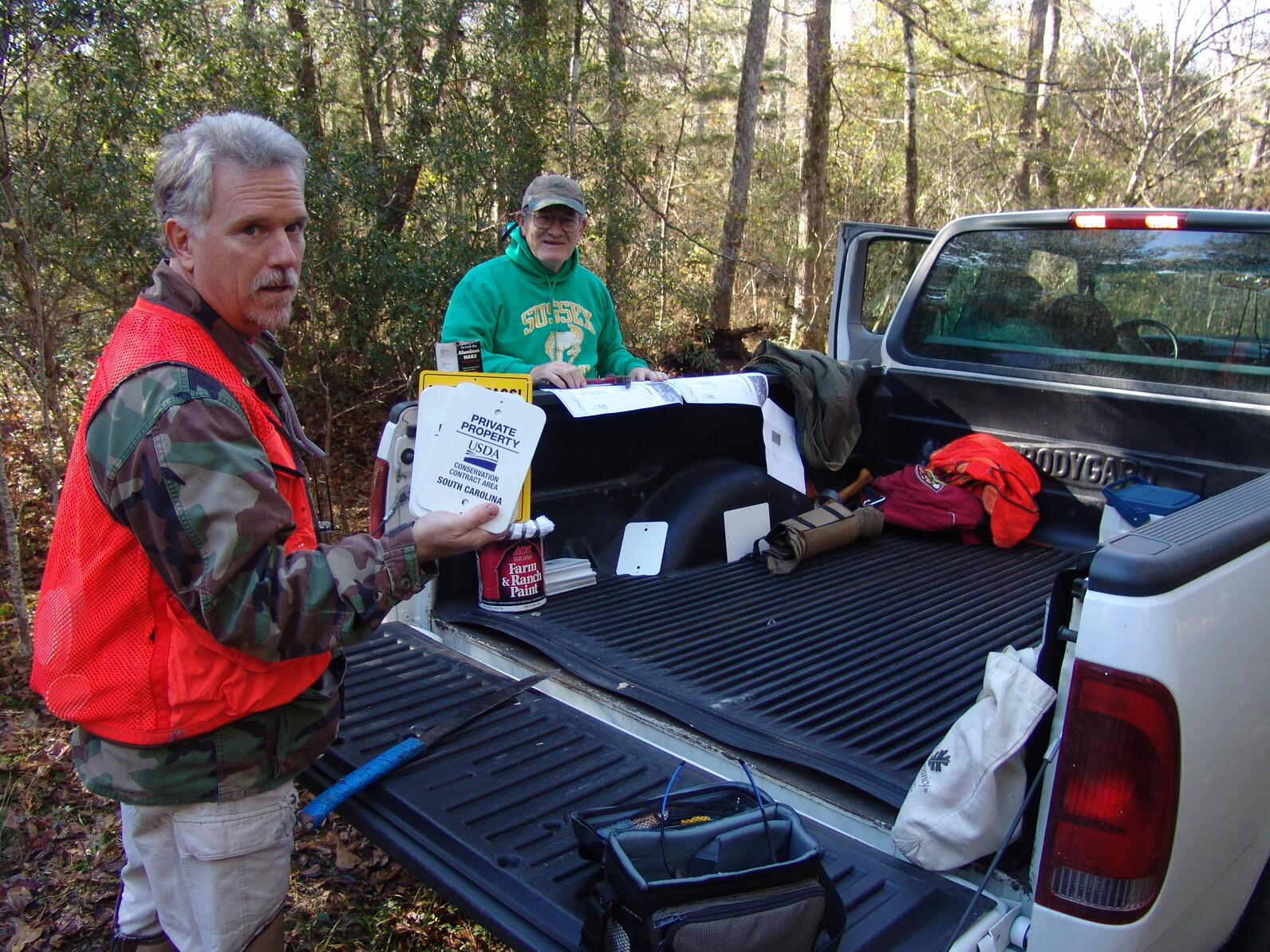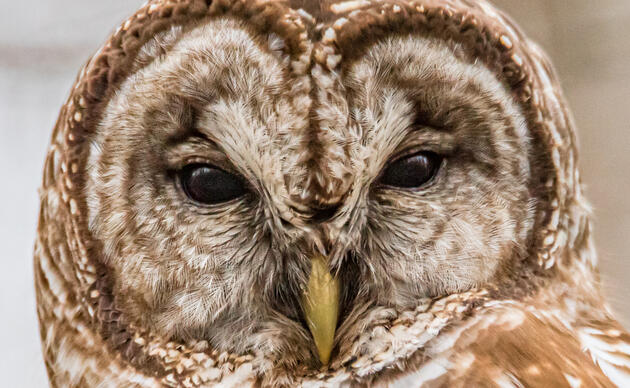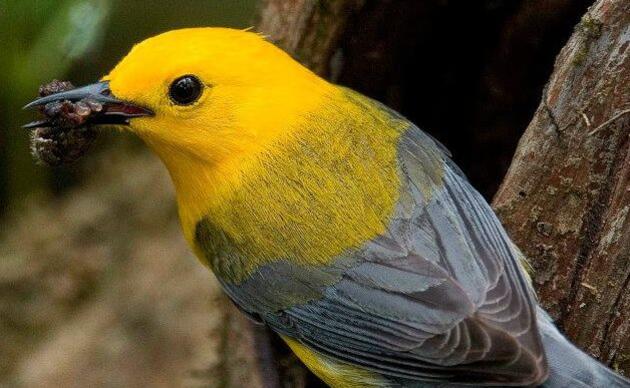Volunteering: Land Management
Restoring and maintaining habitat starts from the ground up. It requires a lot of work out in the woods, fields, and swamps but we get to witness native life spring back in real time, and generations from now will thank us for the shade and wildlife they get to enjoy from the saplings we plant today. If you're looking for some work outside in nature consider one of our land management volunteer opportunities.

Prescribed Burns
Volunteer opportunities, generally November-February, for prescribed burning of longleaf pine, loblolly pine, and grassland habitats. Upcoming events: burns at various sites as weather permits.
- Fire line maintenance
- Prior to the burn, prune branches encroaching into fire line.
- Flapper/raker
- Guard perimeter of burn to ensure fire does not cross fire line.Flap or rake out flames that cross fire line.
- Water, backpack sprayer
- Use 50-lb. backpack sprayer to douse flames crossing fire line or during mop up at the end of the burn.
- Water, ATV
- Operate ATV with water sprayer to douse flames crossing fire line or during mop up at the end of the burn.
- Drip torch operator
- At the direction of the burn manager, operate drip torch to light fire on site.

Boundary Maintenance
- Painting
- Painting boundary line blazes on trees and corner markers.
- Several miles of walking carrying a half-gallon of paint.
- Varied terrain, from field edges to open forest to dense vegetation to oft-wet swamp.
- Expectations
- Warm months - heat, humidity, thorny vines, insects, possible snakes.
- Cool months - thorny vines.
- Signing
- Nailing signs to trees along boundary line.
- Several miles of walking carrying a hammer, nails, and metal signs (5 lbs).
- Varied terrain, from field edges to open forest to dense vegetation to oft-wet swamp.
- Expectations
- Warm months - heat, humidity, thorny vines, insects, possible snakes.
- Cool months - thorny vines.
If you have questions or are interested in volunteering our Land Manager Mark Musselman at Mark.Musselman@audubon.org

Longleaf Planting
- Repeated use of planting bars
- Varied terrain, tilled firelines and fields
- Expectations
- Warm months - heat, humidity, thorny vines, insects, possible snakes.
- Cool months - thorny vines.
If you have questions or are interested in volunteering our Land Manager Mark Musselman at Mark.Musselman@audubon.org
How you can help, right now
Boardwalk Tickets
We're open Wednesdays thru Saturdays 9 AM to 5 PM and
Sundays 11 AM to 4 PM.
Beidler Membership
Click here to purchase a membership, which provides free admission for a year and other benefits. We offer both Individual and Family Memberships.
Donate to Beidler Forest
If you wish to support us, please consider donating. 100% of your donation goes back into Beidler Forest.



